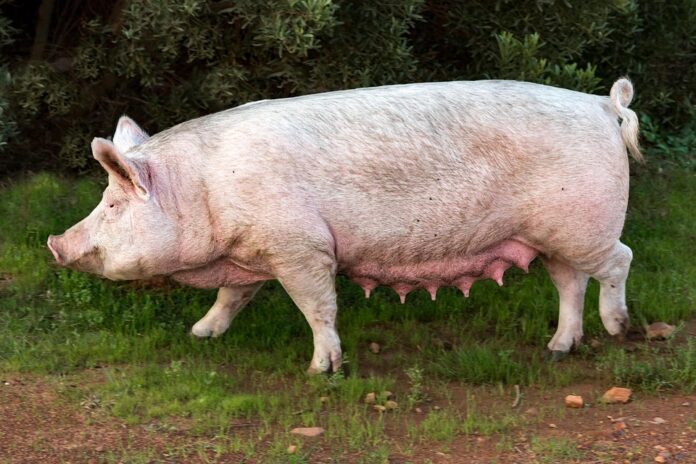The Economics of Swine Production in Developing vs Developed Markets
Swine production is a vital component of the global agricultural industry, providing meat products that are consumed by millions of people around the world. The economics of swine production vary significantly between developing and developed markets, with factors such as technology, infrastructure, government policies, and consumer preferences playing a crucial role in shaping the industry.
Overview of Swine Production in Developing Markets
In developing markets, swine production is often characterized by small-scale, subsistence farming practices. Farmers in these regions typically raise pigs for household consumption or local markets, with limited access to advanced technology and veterinary services. The lack of infrastructure and government support can also hinder the growth of the swine industry in developing markets.
Despite these challenges, swine production in developing markets plays a vital role in food security and poverty alleviation. Small-scale farmers rely on pig farming as a source of income and nutrition, contributing to the overall economic development of rural communities. However, the lack of economies of scale and inefficient production practices can limit the profitability of swine production in developing markets.
Key Challenges in Swine Production in Developing Markets
One of the major challenges faced by swine producers in developing markets is the prevalence of disease outbreaks. Poor biosecurity measures and limited access to veterinary services make pigs vulnerable to diseases such as African swine fever and porcine reproductive and respiratory syndrome. Disease outbreaks can result in significant economic losses for farmers and disrupt the supply chain of pork products.
Another challenge is the lack of access to finance and credit facilities. Small-scale farmers in developing markets often struggle to secure loans for investment in pig farming, limiting their ability to expand operations and improve productivity. Inadequate infrastructure, such as roads and transportation networks, also hinders the distribution of pork products to markets, reducing the profitability of swine production in developing markets.
Opportunities for Growth in Swine Production in Developing Markets
Despite the challenges, there are opportunities for growth in swine production in developing markets. Increasing government support and investment in the swine industry can help improve infrastructure and access to veterinary services, reducing the impact of disease outbreaks. Training programs and technology transfer initiatives can also enhance the productivity and efficiency of small-scale pig farming operations in developing markets.
Furthermore, the rising demand for pork products in developing countries presents a significant opportunity for swine producers to expand their market reach and increase profitability. Consumer preferences for high-quality pork products and processed meat items can drive growth in the swine industry, creating new opportunities for value-added products and export markets.
Overview of Swine Production in Developed Markets
In contrast to developing markets, swine production in developed countries is characterized by large-scale commercial operations and advanced technological systems. Producers in developed markets have access to modern facilities, automated feeding systems, and genetic selection programs that enhance the efficiency and productivity of pig farming operations. Strict biosecurity measures and quality control standards also help prevent disease outbreaks and ensure the safety of pork products for consumers.
The economies of scale and vertical integration in the swine industry in developed markets enable producers to achieve higher levels of efficiency and cost-effectiveness. Large-scale commercial operations can leverage economies of scale to reduce production costs and increase profitability. Advanced breeding programs and genetic selection techniques also help improve the quality and performance of swine breeds in developed markets.
Key Trends in Swine Production in Developed Markets
One of the key trends in swine production in developed markets is the consolidation of farms and vertical integration of the supply chain. Large agribusiness companies dominate the swine industry in developed countries, owning and controlling the entire production process from breeding and raising pigs to processing and distribution of pork products. This vertical integration allows producers to capture a larger share of the value chain and optimize production efficiency.
Another trend is the increasing focus on sustainability and environmental stewardship in swine production. Producers in developed markets are adopting sustainable practices such as waste management, energy efficiency, and animal welfare standards to reduce the environmental impact of pig farming operations. Consumer demand for ethically produced pork products and environmentally friendly practices is driving the adoption of sustainable practices in the swine industry.
Conclusion
In conclusion, the economics of swine production differ significantly between developing and developed markets, with factors such as technology, infrastructure, government policies, and consumer preferences shaping the industry. While small-scale farmers in developing markets face challenges such as disease outbreaks and limited access to finance, producers in developed markets benefit from economies of scale and advanced technology.
Opportunities for growth in swine production in developing markets include increasing government support, training programs, and technology transfer initiatives. In developed markets, key trends such as consolidation of farms, vertical integration, and sustainability practices are driving the evolution of the swine industry. By addressing these challenges and capitalizing on growth opportunities, swine producers in both developing and developed markets can enhance profitability and contribute to the global food supply chain.




